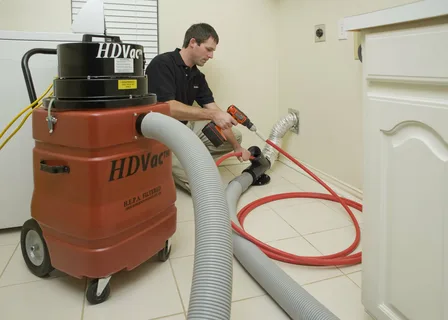Septic tank maintenance is an essential part of managing a home or property with a septic system. However, traditional maintenance can be labor-intensive and costly due to the need to excavate the ground each time access is required. Septic tank riser installation offers a straightforward and practical solution, simplifying the process while saving time and money.
What Is a Septic Tank Riser?
A septic tank riser is a cylindrical structure, usually made of durable materials like plastic, fiberglass, or concrete, that extends from your septic tank to ground level. Its purpose is to provide easy, above-ground access to your tank for maintenance, inspections, and pumping.
Before risers, property owners or professionals had to dig into the ground to locate and service the tank, an inefficient and labor-intensive process. Installing a riser eliminates this need, making it a modern upgrade for septic systems.
Why Install a Septic Tank Riser?
There are several compelling reasons why a septic tank riser is a worthwhile investment:
Convenience
The primary benefit of a riser is convenience. No more guessing the tank’s location or undertaking heavy digging to uncover it. With a riser, you gain direct access whenever needed.
Cost Savings Over Time
While the upfront cost of installation might range between $200 and $600, the long-term savings on labor and time far outweigh the initial investment. Professionals can quickly access your system without extra excavation work.
Safer for Your Property
Risers prevent damage to your septic system during excavation. Additionally, they reduce the likelihood of accidental damage to landscaping or nearby structures.
Environmental Benefits
Properly installed risers create a watertight seal, preventing leaks or contamination of surrounding soil and groundwater.
Aesthetics and Safety
Risers are designed to blend in with the surrounding landscape when installed correctly. Modern risers come with secure lids to prevent unauthorized access or accidental injury.
Materials for Septic Tank Risers
Choosing the right material for your riser depends on your budget, preferences, and the specific conditions of your property.
- Plastic Risers: Lightweight, cost-effective, and resistant to corrosion. These are the most popular options for residential properties.
- Fiberglass Risers: Known for durability and chemical resistance, these are ideal for areas prone to harsh environmental conditions.
- Concrete Risers: Although heavier and harder to install, concrete risers provide unmatched durability and are perfect for industrial or high-traffic areas.
Step-by-Step Guide to Septic Tank Riser Installation
Step 1: Preparation
Begin by gathering the necessary tools and materials. Common items include a shovel, drill, adhesive, bolts, measuring tape, and the riser kit.
Step 2: Locating the Septic Tank
Accurately identify the location of your septic tank using property records or professional locating services. Carefully excavate around the tank’s lid without damaging it.
Step 3: Preparing the Tank Lid
Clean the surface of the tank lid to ensure the riser base adheres properly. This step is critical to achieving a watertight seal.
Step 4: Installing the Riser Base
Secure the riser base to the tank lid using a strong adhesive or bolts. Verify that it is tightly sealed to prevent leaks.
Step 5: Adding Riser Sections
If your riser comes in multiple sections, stack them securely to achieve the desired height. Ensure the riser is level with the ground for safety and aesthetics.
Step 6: Sealing and Covering
Apply a final sealant around the base and between sections for added security. Finally, install the riser lid, ensuring it is secure and tamper-proof.
Benefits of Installing a Riser
Simplifies Routine Maintenance
With a riser in place, pumping and inspections become hassle-free. Professionals can complete their tasks in less time, saving you money on labor costs.
Extends the Life of Your Septic System
Regular and easy access to your septic system ensures that issues are identified and resolved promptly, reducing the likelihood of costly repairs.
Reduces Disruption to Landscaping
Since digging is no longer required, your yard remains intact during routine maintenance. This is especially beneficial for properties with intricate landscaping.
Best Practices for Maintaining a Septic Tank Riser
To ensure your riser continues to perform optimally:
- Inspect Annually: Check for cracks, leaks, or signs of wear.
- Keep the Lid Secure: Always ensure the lid is locked tightly to prevent accidents or unauthorized access.
- Avoid Heavy Loads: Do not place heavy objects or vehicles over the riser.
Key Considerations Before Installation
Before installing a riser, keep the following in mind:
- Permits and Regulations: Check local regulations to ensure compliance.
- Professional Assistance: While DIY installation is possible, professional services ensure proper fitting and sealing.
- Cost Factors: Material and labor costs vary based on your property and riser type.
Conclusion
Septic tank riser installation is a game-changer for property owners seeking convenience and efficiency in septic system maintenance. With easier access, reduced costs, and environmental benefits, it’s a practical upgrade that pays off over time. Consider installing a riser today to streamline your septic care routine and protect your investment for years to come.
Simplify septic system care with a septic tank riser installation. Reach out to an expert today to enjoy easier maintenance and long-term savings for your property!
Also Read
- ► Luxury Handbag: The Quintessence of Fashion and Craftsmanship
- ► GodSpeed Clothing || Official God Speed® Clothing || New 2024
- ► Best School in Delhi NCR – Sunrise International School 2025-26
- ► Who are the top interior designers in KL for 2025 projects?
- ► Instant Volume: The Magic of Headbands with Hair Attached
- ► Your Guide to Finding the Best Homes for Sale in Greeley, CO
- ► Mitolyn Supplement for Weight Loss: Honest Review and Everything You Need to Know
- ► How to Identify the Best Paint Protection Film for the Car?
- ► Considerations for Businesses Switching to Solar Energy
- ► Who Decides War? The Complex Decision-Making Process
- ► 7 Reasons to Choose Outsource Marketing Solutions for Your Business
- ► How Can Travel Companies Benefit from Bulk Email Campaigns?
- ► Creating Impactful Application Essays for Business Success
- ► Best Health Insurance for Senior Citizens in India With Coverage for Organ Transplants
- ► Stüssy Official Redefining Streetwear for the Digital Era





